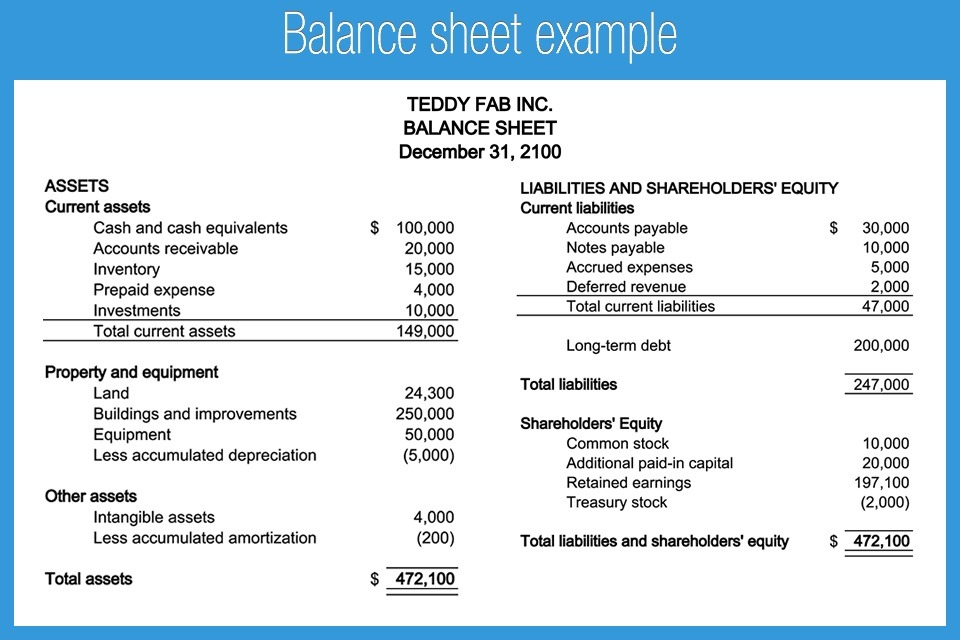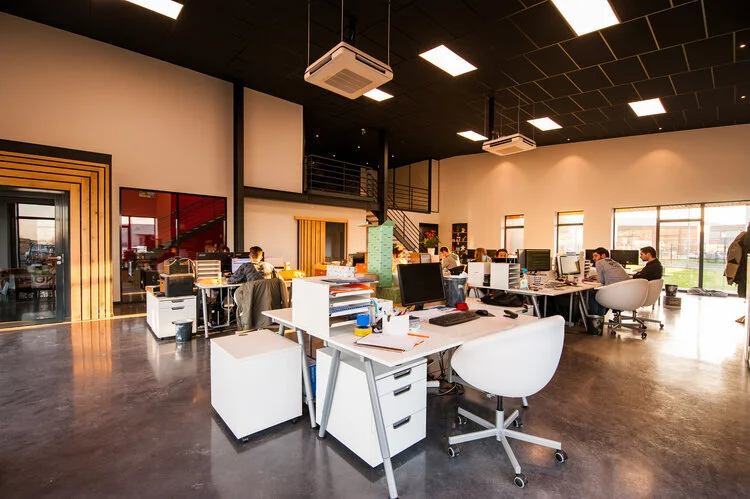Make your Real Estate Work for You
A business’s book value is calculated by subtracting its liabilities from its assets. While many other forms of valuation exist, this method gives us a fundamental understanding of how we can add value to our businesses. In the following article we’ll show you basic principles and give you real world examples of how the right real estate strategy can help your business Increase Sales, Decrease Expenses, and Add Assets.
1.Increase sales
Your office can help you grow sales by increasing exposure to potential customers as well as enabling your employees to be more productive.
The easiest way to begin capitalizing on this strategy is by locating your office in close proximity to your target customers. If you’re a B2B business this may mean locating yourself in the central business district. If you’re in supply chain management you may want to locate your business next to manufacturing and distributing facilities. If you are B2C you may want to consider locating yourself on a busy pedestrian or vehicle corridor, this is especially important if you see customers at your office or allow walk-in business. This not only has the potential to increase sales by exposing your company to more customers but also can reduce travel costs if you travel to your customers location.
Once you’ve found your location, enhance your presence with prominent signage. Some properties and local municipalities may have restrictions on signage, so this is something that should be discussed when you are comparing potential properties. Prominent signage will increase the chances of one of your customers seeing you when they are nearby.
Another driver of sales is employee productivity. Since we only have so much time in a day, an extra call by one of your salespeople or another 30 minutes for one of your developers to work on a new product could mean $1,000’s in sales. To enhance productivity you’ll want to focus on designing space that matches the type of work your employees are performing. In other words, you need the correct ratio of dedicated quiet spaces and collaborative spaces. For more on this topic see our article on How Office Design Affects Productivity.
Example: Let's say you strategically locate your office in closer proximity to your target customer, install prominent signage, and design your office to reduce the amount of distractions for your salespeople. This leads to one additional sale per month from drive by’s, your two salespeople are also able to make one additional call per day. With your close rate of 5% this leads to an additional 2.5 closed leads. Multiply those closed leads by your average sale of $1,000, this leads to $3,500 in sales per month or $42,000 each year.
2. Decrease Expenses
Another way to add value to your business through real estate is reducing expenses. The two main ways to achieve this are reduced occupancy cost and reduced employee turnover.
You can reduce occupancy cost in many ways, but it starts with your office procurement process. During this process you should evaluate the best type of space for your business. If you are an early stage company shared or virtual office solutions might be most cost effective. These days even mature companies are evaluating ways to save money on office space through multiple space types. This might mean a mixture of shared, virtual, and traditional office space. Regardless of which office type you decide is the best fit, you need to compare options. Receiving bids from multiple properties is the best way to make sure you are getting the best office available for the most competitive price. A report produced by Bonfire in 2019 called “The State of the RFP” shows that the average public sector RFP achieved 22% cost savings. While this may vary in the private sector it still shows the potential cost savings that can be achieved by an RFP process.
The right space can also lead to higher employee satisfaction, which can help attract better talent and reduce employee turnover. This again starts with location, as employees today want to limit their commute times, and would prefer to either walk or bike to work. Once they arrive at the office, there’s a plethora of amenity options to increase satisfaction, such as attractive lunch options, fitness activities, ect, but a recent survey of 1,614 workers found employees prefer natural light and views over any other office perk.
Example: So you’ve weighed your options and decided to lease a 2,500 square feet private suite for three years, you’ve utilized an RFP process during your space search, you choose a location in proximity to your talent pool, and you’ve made sure every employee has exposure to natural light. By utilizing other proposals as leverage you were able to get the price on the space you wanted down to $20/SF down from the $22/SF list price saving you $5,000 a year or $15,000 over the term of your lease. One of your employees who previously commuted 45 minutes to work had been looking for other opportunities closer to home, but has decided to stay since his new commute is a 10 minute bike ride. This saved you $1,000 in recruiting costs and $3,173.08 salary over the new employees' three weeks of training. This saved you $8,173.08 in the first year of your lease and would save you a minimum of $18,273.08 over the term of the lease.
3. Addition of Assets
This might not be as straightforward, but you can’t grow your assets without growing your real estate. The main point here is to ensure that your real estate plans match your business growth plans. You can’t purchase additional equipment and open up a new manufacturing line without sufficient space. In the same way you don’t want to limit the number of employees you can hire because you don’t have enough desk space for them to work. Be sure to think ahead during your office search and have a plan in place. This might mean right of first refusal on adjoining office space, or staging your lease terms to enable you to move into a larger office when needed.
Another way to increase the value of your business may be to invest in real estate itself. This may not be the right move for every business, since real estate is a business in itself and most businesses want to focus their operations on their core business, but with the right plan and partners you may be able to reduce your occupancy costs and/or create additional income through the investment of real estate.
The final way we’ve found to increase your business value through real estate is with branding. Your brand is an asset and should be valued as such if you ever decide to sell your business. The prestige of signage and naming rights on the right building can give your brand a lasting impression and position your company as the market leader in your industry. While naming rights of sports arenas and stadiums may command up to $25 million a year, office building naming rights typically are structured within the lease agreement and can be negotiated for without additional expense. If the timing is right, this may be possible even if you don’t occupy a majority of the building and should be considered if you’re moving into a new building or if the business who had the naming right has recently moved out.
Example: Your business is growing quickly so you decide to lease extra space to allow room to grow, to mitigate the extra rent, you plan to sublease the 3 extra offices and 4 open desks to month to month tenants. During the RFP stage you also found out that naming rights were available for the building, so you negotiated naming rights along with prominent signage into your lease. Since you leased a larger space you were able negotiate a lower rent, therefore you’re actually able to make $508 a month above what you paid for the space and still give your subtenants a reasonable rate on their spaces. After ten months you win a $1,000,000 a year contract you’ve been pursuing. You immediately send your subtenants their 30 day termination notices and within a month you are able to increase your workforce by seven, enabling you to manage that new contract. Within the first year, you have earned an additional $5,080 through subleasing your additional space, and are able to immediately scale your workforce to cover your new $1,000,000 contract. A year later you get an offer to sell your business that you can’t refuse, you explain to them the value of your brand and the fact that you still have 5 years on your lease which includes signage and naming rights on the building. This is valued at an additional $150,000 which is added on to the sales price.
The Key to Ensuring you get the most value from your real estate.
Taking advantage of any of the above strategies requires proper planning and consideration of all factors during the office procurement process. The single best step you can take to ensure you choose the correct office space for your business is to seek the expertise of an office space leasing specialist. A commercial real estate consultant can provide tools and experience to help you identify and prioritize your list of criteria, and evaluate available office locations that meet those criteria.
As Pittsburgh's most transparent real estate consulting firm, specializing in office space leasing, Venture Real Estate is here to provide the tools and guidance you need to ensure you get the most value from your office space. We leave no stone unturned as we walk you through these five important steps of the office space leasing process:
Development of Criteria needed for your office space.
Identification of available spaces that meet your criteria
Tour and Rate Spaces
Request for Proposals (RFPs) - make landlords bid to have you as a tenant.
Compare, Negotiate, and Select - make the right selection and negotiate the best terms
If you would like to learn more about the tools we provide, and our ideal space guarantee, click here to speak with one of our experienced specialists. We look forward to working with you!






